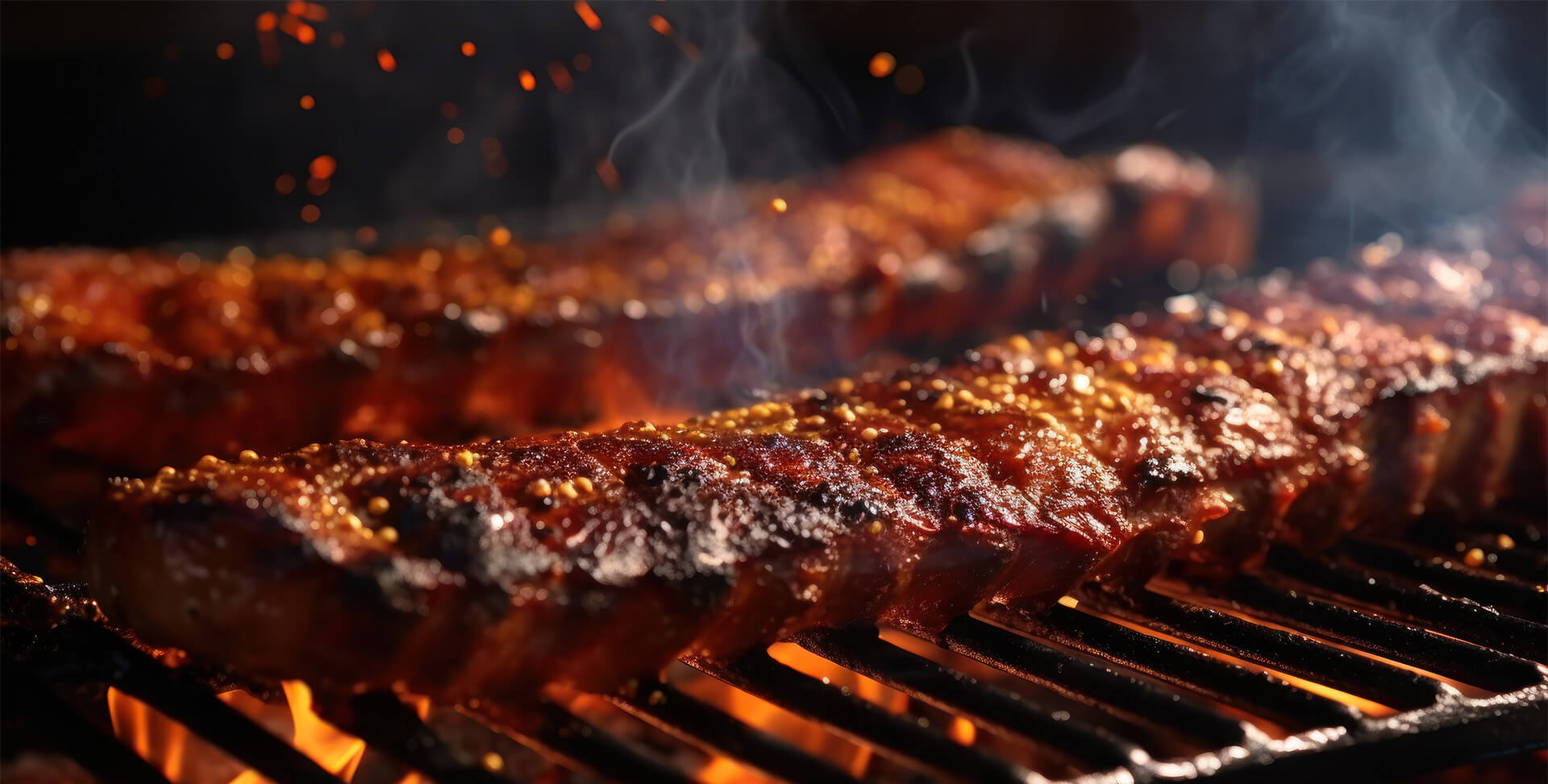Smoking meat is an age-old method that transforms cuts into flavorful, tender, and aromatic dishes. It’s a slow cooking process that relies on low temperatures and smoke from burning wood to infuse the meat with a distinctive taste. Mastering the art of smoking meat requires understanding the right techniques, choosing the best woods, controlling temperature, and using some insider tips and tricks. Here’s your detailed guide to smoking meat like a pro.
Choosing the Right Wood
The type of wood you use significantly influences the flavor of your smoked meat. Here’s a quick guide to help you choose:
- Hickory: Strong and robust, hickory is ideal for red meats like beef and pork. It imparts a bacon-like flavor.
- Applewood: This wood gives a mild, sweet, and fruity flavor, perfect for poultry and pork.
- Mesquite: Strong and intense, mesquite is best used for quick-cooking meats like steaks. It can be overpowering for long smoking sessions.
- Cherrywood: Mild and fruity, cherrywood is excellent for poultry and pork, providing a rich mahogany color to the meat.
- Oak: Versatile and mild, oak is great for long smoking sessions and works well with almost any meat.
Temperature Control
Maintaining a consistent temperature is crucial for smoking meat. Most smoking is done at low temperatures, between 225°F and 250°F. Here are some tips for perfect temperature control:
- Preheat Your Smoker: Always preheat your smoker to the desired temperature before adding the meat.
- Use a Water Pan: Placing a water pan in the smoker helps maintain a stable temperature and adds moisture to the cooking environment.
- Monitor with Thermometers: Use a reliable smoker thermometer to track the smoker’s internal temperature and a meat thermometer to monitor the meat’s internal temperature.
- Adjust Vents: Regulate the airflow with the smoker’s vents. Opening the vents increases the temperature, while closing them reduces it.
Additional Tips and Techniques
Meat Preparation
Marinating and Brining:
- Marinating: Enhances flavor and tenderness. Use a marinade that complements the type of meat you're smoking. Acidic ingredients like vinegar or citrus juice can help tenderize the meat, while herbs and spices add depth of flavor.
- Brining: Especially beneficial for poultry, brining helps retain moisture and adds flavor. A basic brine consists of water, salt, sugar, and sometimes other flavorings like herbs, spices, or aromatics. Soak the meat in the brine for several hours or overnight before smoking.
Dry Rubs:
- Applying a dry rub to the meat before smoking can create a flavorful crust or bark. A good dry rub typically includes a mix of salt, sugar, paprika, garlic powder, onion powder, black pepper, and other spices. Experiment with different combinations to find your perfect blend.
Smoke Management
Adding Moisture:
- To prevent meat from drying out during long smoking sessions, place a water pan in the smoker. This not only helps maintain a stable temperature but also keeps the air inside the smoker moist, resulting in juicier meat.
Using a Smoker Box:
- For gas or electric smokers, use a smoker box filled with wood chips to generate smoke. This allows for better control over the smoke production and can enhance the flavor of the meat.
Smoking Techniques
Reverse Searing:
- This technique involves smoking the meat at a low temperature until it’s nearly cooked, then finishing it with a high-heat sear. This method is particularly effective for thicker cuts of meat like steaks and pork chops, giving them a flavorful crust while maintaining a juicy interior.
Foil Wrap (Texas Crutch):
- Wrapping meat in foil during the smoking process can speed up cooking times and keep the meat moist. This technique is often used for tougher cuts like brisket and pork shoulder. Wrap the meat when it reaches about 160°F and continue smoking until it reaches the desired internal temperature.
Equipment and Maintenance
Using the Right Tools:
- Invest in a quality smoker and essential tools like long-handled tongs, a meat thermometer, and heat-resistant gloves. Proper tools make the smoking process easier and safer.
Regular Maintenance:
- Keep your smoker clean and well-maintained. Regularly remove ash and grease buildup to ensure optimal performance and to avoid any off-flavors from old residues.
Patience and Practice
Timing:
- Smoking meat is a slow process that requires patience. Plan ahead and allow plenty of time for smoking, resting, and serving. Rushing the process can result in less flavorful and tougher meat.
Learning from Experience:
- Keep a smoking journal to record your experiences, including the type of meat, wood, temperature, cooking time, and the results. This helps you learn from each session and refine your techniques.
Serving and Pairing
Resting the Meat:
- After smoking, let the meat rest for at least 10-15 minutes (or longer for larger cuts) before slicing. This allows the juices to redistribute, ensuring a moist and flavorful result.
Pairing with Sides and Beverages:
- Complement your smoked meat with appropriate side dishes and beverages. Classic barbecue sides include coleslaw, baked beans, cornbread, and potato salad. For drinks, consider pairing with craft beers, red wines, or bourbon.
